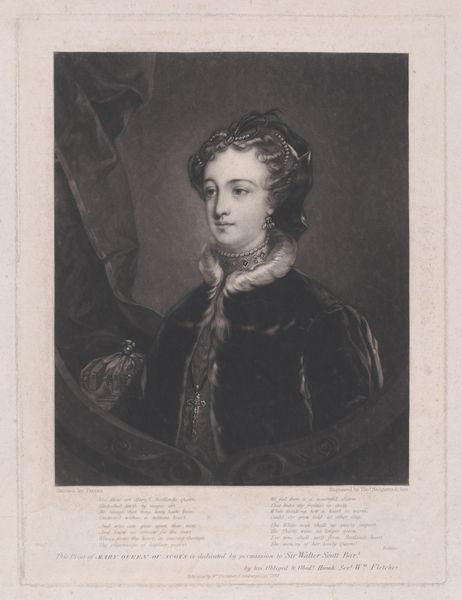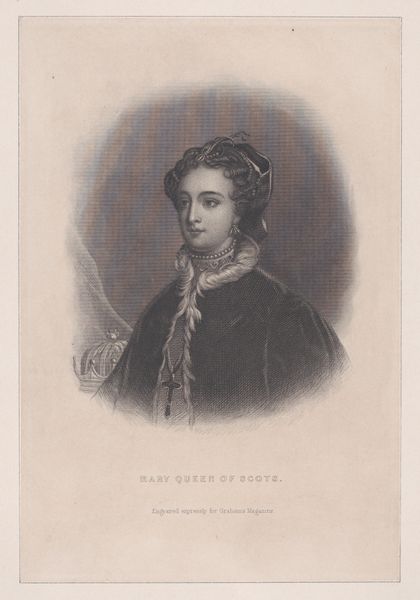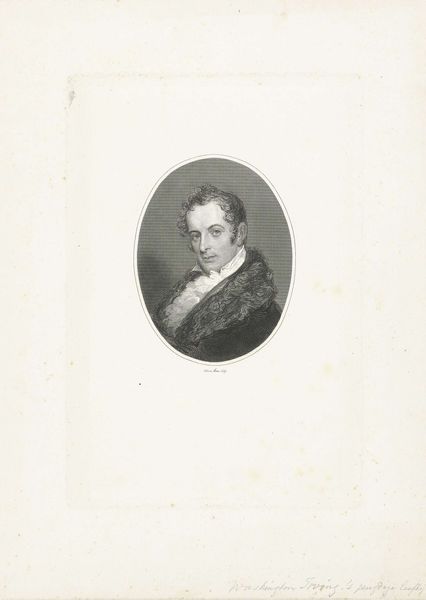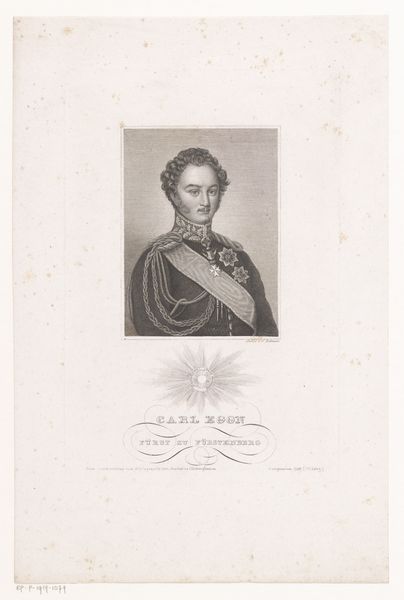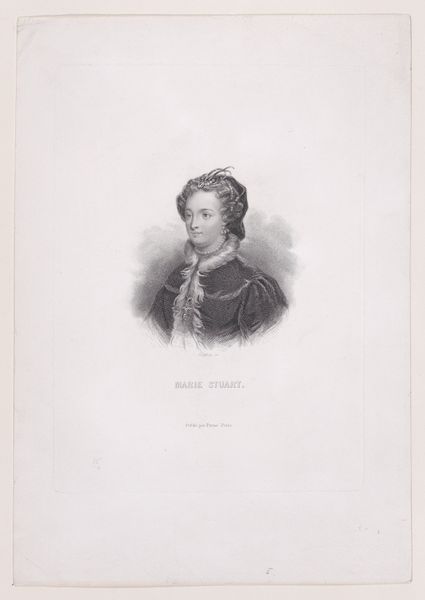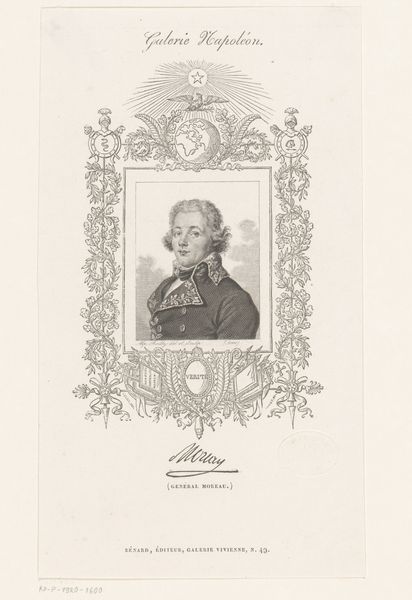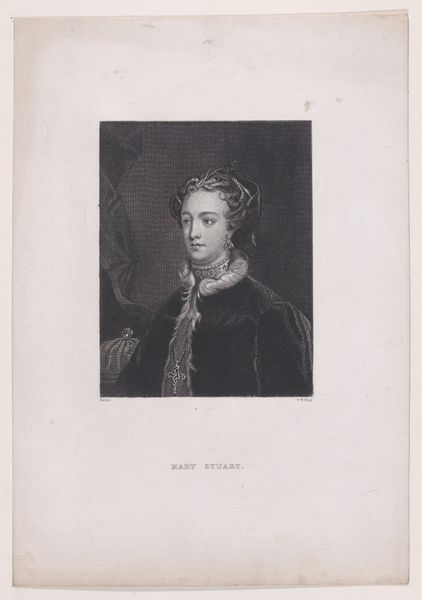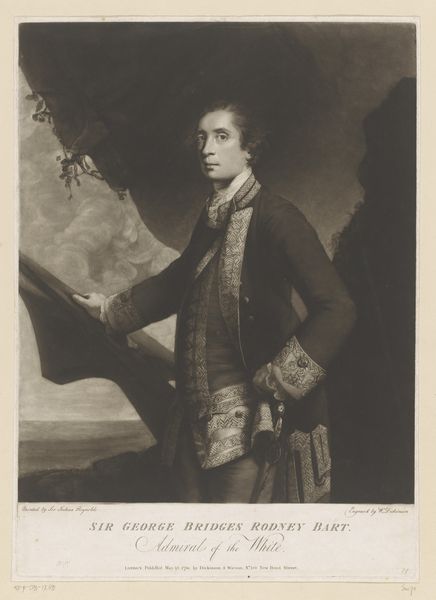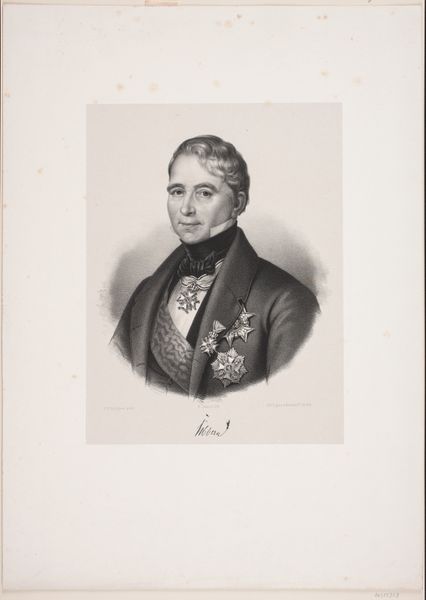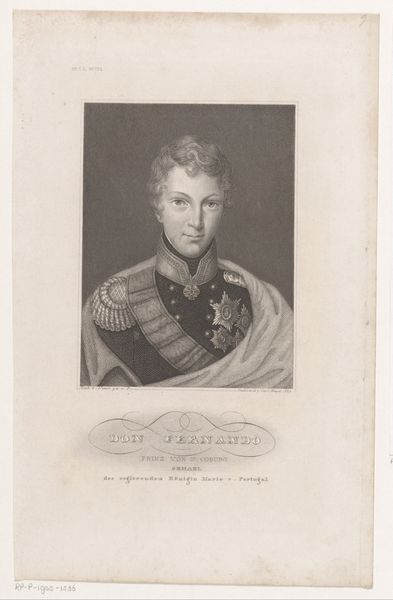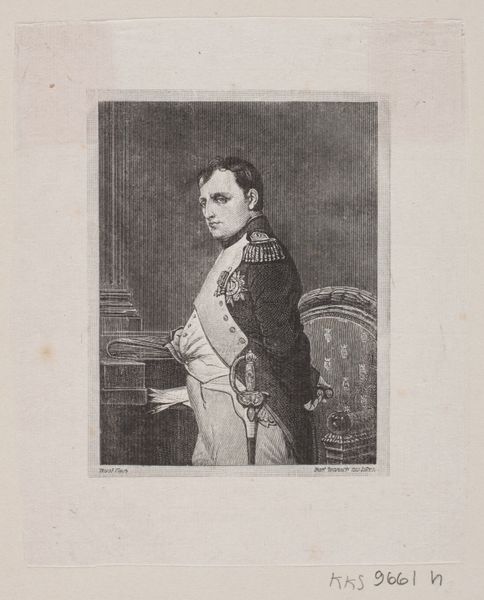
Mary, Queen of Scots, with scene of her escape from Loch Leven Castle 1835 - 1890
0:00
0:00
Dimensions: Sheet: 9 1/4 × 5 7/16 in. (23.5 × 13.8 cm)
Copyright: Public Domain
Curator: This engraving, rendered between 1835 and 1890, depicts Mary, Queen of Scots, accompanied by a scene of her dramatic escape from Loch Leven Castle. Editor: Ooh, dramatic indeed. It gives me this melancholy, imprisoned-bird feeling. I wonder if the artist meant to convey both her royal presence and her vulnerable state. The composition almost boxes her in, don't you think? Curator: I concur. Consider the dual presentation: a regal portrait set above a miniature depiction of her escape. It's a brilliant dichotomy of power and powerlessness rendered in a tight formal arrangement. The engraving style reinforces this contrast through the rigidity of the lines in her portrait, compared with the looser strokes in the escape scene, thus underscoring semiotic theory by illustrating structural tension. Editor: That structural tension works. It’s funny how such delicate lines create this almost oppressive mood. There's such clarity in her face; yet there is a shadow in her eyes that whispers trouble. Curator: Precisely. The engraver has masterfully captured this inherent duality of her historical persona within this single work. Her regal adornments like jewelry and fur contrasts sharply with the vulnerability implied by the lower register composition showing escape— illustrating a dialectic of royal representation versus physical struggle. Editor: A total melodrama queen in a tragic movie! Though I'm curious, what is the artist trying to tell us about female resilience when framed with symbols and storytelling about overcoming such challenges? Curator: Well, one cannot definitively ascribe such narrative intention outside careful art historical investigation. What’s clear is how the engraving serves as more than merely a portrait; instead functioning on symbolic, social, and emotional axes reflective through structural juxtapositions creating internal conceptual meaning which needs deconstruction. Editor: Even without deep investigation it touches you, almost pulls you. I leave this pondering Mary’s defiance. I hope people recognize the emotional impact—that defiance we all have in the face of something difficult. Curator: Quite. We depart the historical artifact understanding how visual components converge establishing thematic significance extending further through subjective associations enhancing one's apprehension when confronting structures in art.
Comments
No comments
Be the first to comment and join the conversation on the ultimate creative platform.
